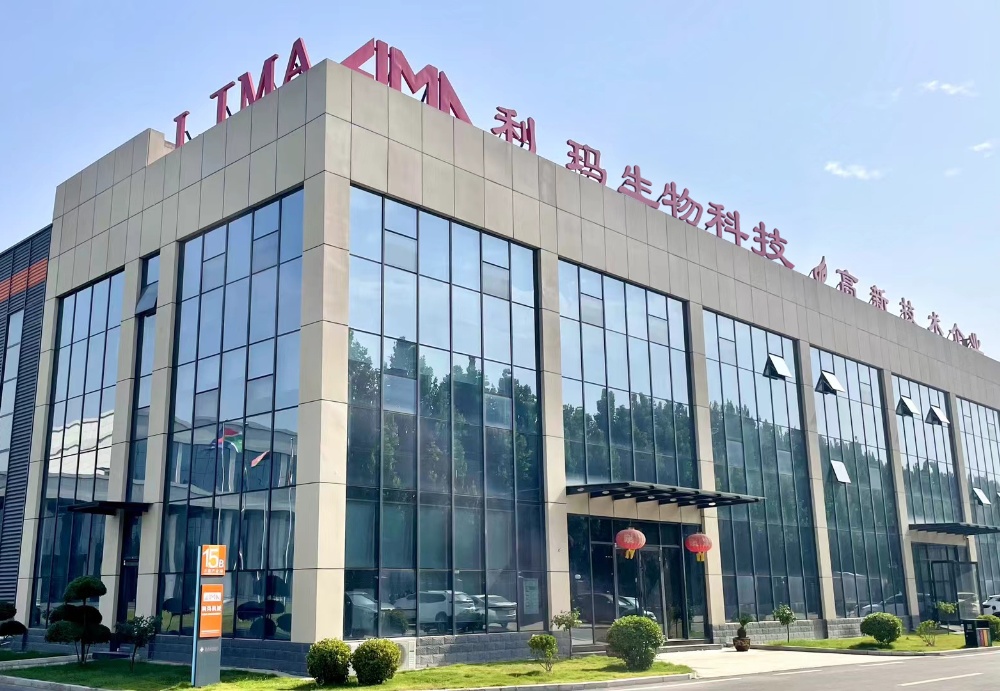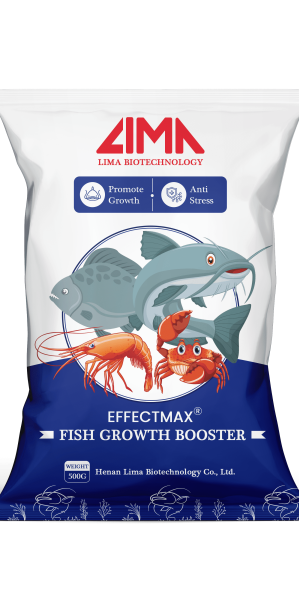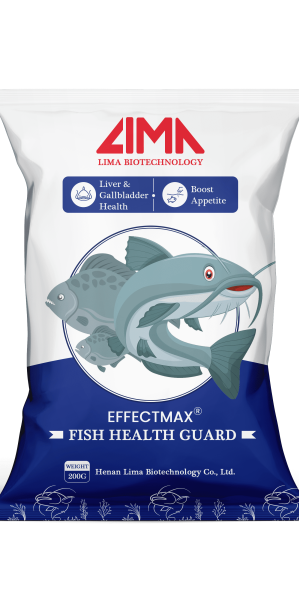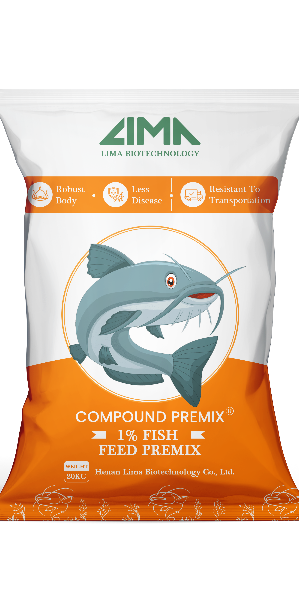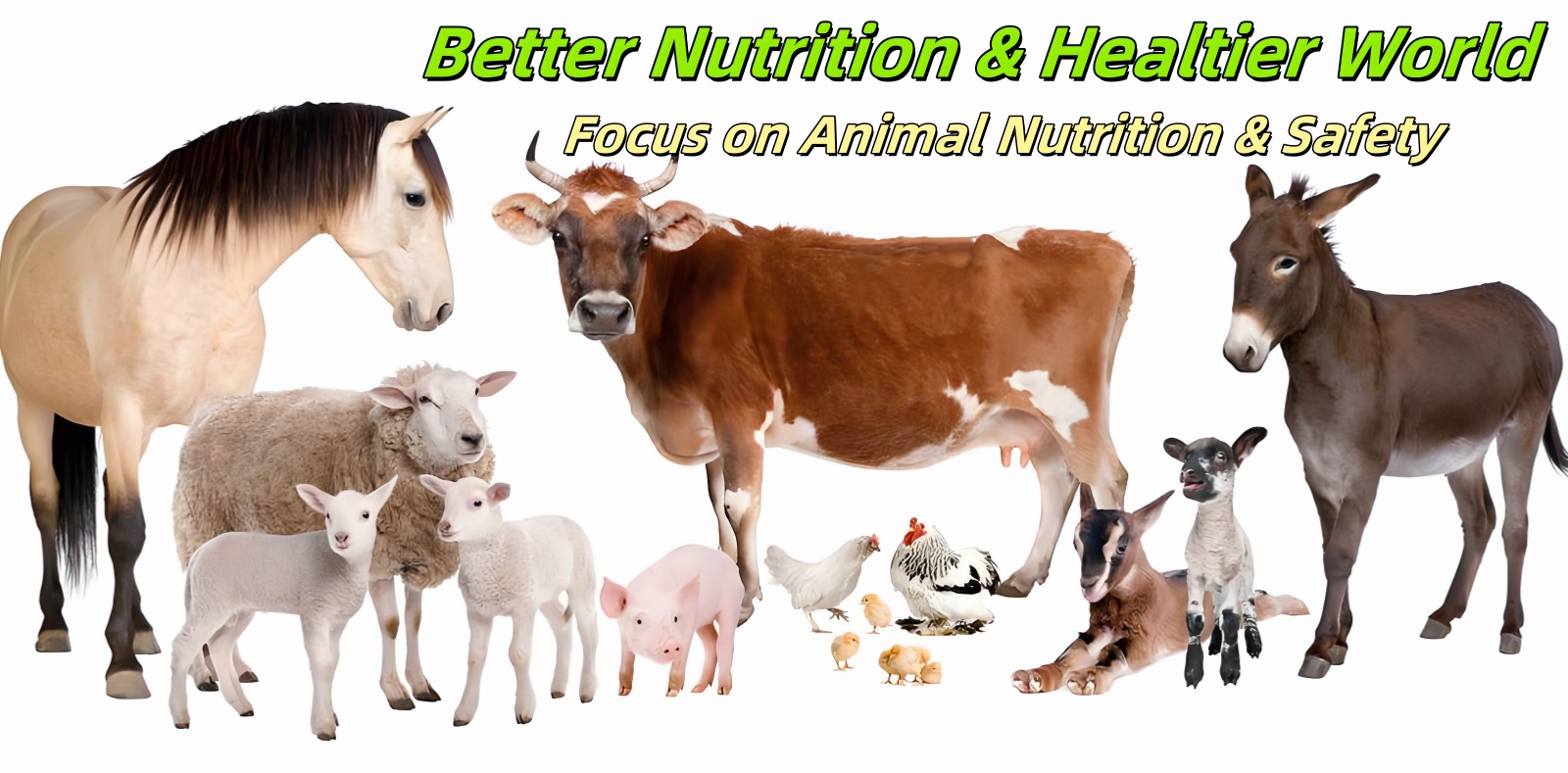In today's highly competitive aquaculture industry, improving the efficiency of fish farms is crucial for farmers. Efficient farming not only brings higher yields and better economic benefits, but also contributes to the sustainable development of the industry. Next, let's take a closer look at a range of proven methods for improving fish farm efficiency.

How to improve efficiency on your fish farm?
In today's highly competitive aquaculture industry, improving the efficiency of fish farms is crucial for farmers. Efficient farming not only brings higher yields and better economic benefits, but also contributes to the sustainable development of the industry. Next, let's take a closer look at a range of proven methods for improving fish farm efficiency.
1. Monitoring and Control
(1) Water Quality Monitoring: A Guarantee for a Healthy Fish Pond
Water quality is considered a core indicator of a healthy and productive fish pond. Regular monitoring of water quality in fish ponds is the basis for maintaining fish ponds in good condition, and it is recommended that comprehensive monitoring be carried out at least once a week. In daily operation, farmers can make use of some simple and easy-to-use water quality testing tools, such as PH test pens and dissolved oxygen testers. These tools provide quick and easy access to key water quality data. The results of each monitoring should be recorded in detail in a special form. Through long-term analysis of the data, it is possible to gain an insight into subtle changes in water quality and identify potential problems as early as possible.
(2) Temperature Monitoring
Temperature has a significant impact on fish growth and reproduction. The right water temperature can create an ideal growing environment for fish. Farmers should adopt a regular and quantitative method to measure and monitor water temperature, set up water temperature monitoring points at different locations in the fish pond, and monitor the water temperature at least 2-3 times a day. At the same time, pay close attention to the fluctuation of air temperature and combine it with the actual growth performance of the fish to comprehensively determine whether the water temperature is appropriate.
(3) Oxygen monitoring
Oxygen is essential for fish survival. Regular measurement and monitoring of the oxygen content in the fish pond can detect the problem of low oxygen in time. It is recommended to use professional oxygen testing equipment to ensure the accuracy of the data. Once the oxygen level is found to be too low, immediate measures should be taken, such as replacing part of the water body in time, or using oxygen boosting equipment to supplement oxygen for the fish pond.
(4) Bait Addition
Bait is the material basis for fish growth, but the amount and frequency of feeding must be scientifically planned and strictly controlled. Feeding at regular intervals is the basic principle, and the specific amount of bait to be added should be accurately determined according to the type and age of the fish. Generally speaking, the metabolism of growing fish is strong, so they need to be fed 2-3 times a day; while the digestive function of elderly fish is weakened, so the number of feeding times should be reduced appropriately.
(5) Disease Control
Various diseases occur from time to time during fish pond culture, such as white spot disease, bacterial diseases and fungal diseases. To ensure healthy growth of fish and achieve high yield, regular disinfection of fish ponds is an essential preventive measure. During the season of high incidence of epidemics, preventive medication can be used to reduce the risk of disease outbreaks.
2. Feed Management

1) Quality Control
Regularly scrutinize the quality of feeds in fish farms to ensure that the feeds are fresh and have high nutritional value. Only high-quality feed can provide sufficient nutrition for fish and promote their healthy growth.
2) Health Management
Carry out routine disease control and regular cleaning of ponds or fish tanks to keep the water clean. Especially in the hot season, it is necessary to increase water quality monitoring, regularly clean and replace the water in the fish tank, maintain water cleanliness and transparency, and effectively prevent the occurrence of diseases.
3) Precision Feeding
Achieve precision feeding of fish through scientific selection of feed ingredients, rational matching of feed types and precise adjustment of feed ratios. Ensure that each fish can obtain feeds suitable for its own growth stage and physiological needs, so as to keep the whole fish population in a good growth state.
3. Creating optimal fish ecosystems
- Influencing factors
In the aquaculture environment, there are many variables that can affect production, including water quality, oxygen supply, ammonia levels, temperature, and so on. While modern recirculating aquaculture systems (RAS) can achieve more effective control over some of these factors, there are still some key elements that need to be focused on to create optimal fish ecosystems.
- Relationship between nutrition and ecology
The rationality of nutritional formulations, the quality of raw materials, the performance of feeds, the management of the transportation process, the variability of climatic conditions, and the operation of feed mills may all negatively affect fish growth performance and farm productivity if they are not properly addressed. Fish are more likely to grow optimally when good ecosystems are maintained, which includes ensuring good quality water. Adequate nutrient supply and high-quality raw materials aid in fish digestion, nutrient absorption and effective feed utilization, which in turn produces healthier fish. At the same time, this reduces the production of fish waste and pollution of the culture environment and system. Laying a good foundation in the early stages of aquaculture is crucial for fish to realize their full growth potential.
4.Maintaining Water Quality
4.Maintaining Water Quality
Properly understanding and maintaining the right water quality and aquaculture environment for fish and shrimp is crucial. Different species of fish and shrimp have different requirements for ideal environmental conditions. Failure to maintain these conditions will have a negative impact on growth and performance, and the risk of disease on the farm may increase as the immune response of the fish and shrimp declines.
- Feed and water quality linkages
The use of nutritionally balanced aquafeeds with high quality ingredients can significantly improve the palatability and digestibility of feeds for fish and shrimp, and this will be directly reflected in fish and shrimp excreta. Low feed digestibility will lead to increased protein and mineral excretion, and these wastes may contain large amounts of nitrogen and ammonia that are harmful to water quality, which in turn pollute the water body and jeopardize the survival of fish and shrimp. Therefore, when selecting feeds, more attention should be paid to protein utilization rather than just protein content. Doing so will not only save the time and labor costs required for treating water quality and overall management, but also provide a healthier environment for fish and shrimp to thrive.
5. Supporting Internal Defense System: Strengthening Fish Resistance
- Key Fish Organs and Health Relationships
The skin, intestines and gills of a fish are the main parts of the fish that interact with factors in the external environment, and the health status of these parts directly affects the overall health of the fish. Effective protection of these organs is essential, both from the point of view of internal physiology and external environmental exposure.
- The role of Fish Feed Addituives
Lima Biotech Fish Growth Booster, which has been carefully formulated to meet the specific needs of different aquatic organisms and life stages. The healthier, stronger fish populations, strengthens their natural defenses and has a positive effect on gut function.Fish Growth Promoter ensures the continuity of their nutritional requirements, thus achieving optimal breeding results.
6. Technology Applications
(1) Recirculating Aquaculture System (RAS) Advantages
Recirculating Aquaculture Systems (RAS) are a relatively new and innovative technology. The design and adoption of RAS facilities can give producers greater control over their aquaculture systems and allow for more sophisticated management of aquaculture systems. By having full control over all elements of the production process, it helps to create a stable culture environment and reduce stressors that may affect the animal's immune system. In this type of system, choosing the right feed is also crucial.
(2) Feed selection in RAS
In RAS facilities, mechanical filters are primarily used to remove larger and harder manure. However, producers need to be aware that if the feed provided is not suitable for the environment, it may result in the production of excessive waste, reducing the efficiency of nutrient uptake by the fish and consequently deteriorating water quality.
(3) Optimizing Feed Conversion Ratio (FCR) in relation to profitability
Optimization of Feed Conversion Ratio (FCR) is closely related to the profitability of fish farms. Fish are sensitive to a number of external factors, such as fluctuations in water temperature, changes in water quality and oxygen levels, all of which have an impact on growth and performance. Therefore, optimizing FCR through rational management of these factors can effectively improve the benefits of fish farming.

7. How to Make Fish Farming More Sustainable?
1) Adopting environmentally friendly feed alternatives
Conventional fish feeds rely heavily on fishmeal and fish oil obtained from wild-caught fish, and this high demand is leading to the gradual depletion of marine resources. To solve this problem, fish farms can adopt environmentally friendly feed alternatives such as plant-based feeds, algal feeds or agricultural by-products (e.g. soybeans). Algae feed, for example, is rich in omega-3 fatty acids and has a similar nutritional profile to conventional fish oil. Insect proteins are also a promising option, requiring less land, water and energy to produce, making them both efficient and environmentally friendly. By diversifying feed sources, fish farms can contribute to the protection of marine ecosystems and slow down the overall environmental degradation trend.
2) Reducing antibiotic use
Over-reliance on antibiotics in fish farming has many drawbacks, which may not only lead to the emergence of antibiotic-resistant bacteria, but also pollute aquatic ecosystems. In order to reduce the use of antibiotics, the focus should be on proactive measures to fundamentally improve fish health. The first step is to ensure that optimal water quality is maintained, and that aquaculture densities are reasonably controlled to avoid overcrowding of fish and to create a stress-free and favorable environment for fish. At the same time, natural health-promoting products such as probiotics and immunostimulants can be used to enhance the fish's immune system and reduce the likelihood of their falling ill, thus reducing their reliance on antibiotics.
3) Switching to Renewable Energy
Aquaculture operations usually require a lot of energy to keep systems such as water circulation, filtration and aeration running. Switching to renewable energy sources such as solar, wind or water can significantly reduce carbon emissions. In addition, the use of energy-efficient equipment is an effective way to optimize resource use. For example, efficient aerators and pumps can reduce energy consumption while maintaining water quality. By combining renewable energy with energy-efficient technologies, fish farms can not only achieve greater sustainability, but also reduce operating costs.
4) Using Recirculating Aquaculture Systems (RAS)
Recirculating Aquaculture Systems (RAS) are an innovative solution for sustainable fish farming. RAS is an innovative solution for sustainable fish farming that filters and recycles water on a continuous basis, drastically reducing water consumption while preventing pollution of the surrounding ecosystem with farm wastewater. rAS technology is particularly effective in the farming of high-value fish, such as salmon and sturgeon. Imperia Caviar, for example, sustainably farms sturgeon using an advanced RAS system that not only ensures product quality, but also minimizes environmental impact, demonstrating the potential of innovative technologies to achieve both economic benefits and environmental sustainability.
5) Integrating Multi-Trophic Level Aquaculture (IMTA)
Global reliance on aquaculture is growing rapidly, and it is predicted that by 2030, 50% of the seafood consumed globally will come from fish farms. To meet this demand sustainably, an effective strategy is to integrate Integrated Multi-Trophic Aquaculture (IMTA), which refers to the complementary farming of multiple species in the same system, where, for example, fish, shellfish and seaweeds can live together in a mutually beneficial ecosystem. Among other things, seaweeds and shellfish can act as natural biofilters, absorbing nutrients and waste produced by fish. This type of farming not only reduces environmental degradation, but also creates a diversified source of income. Farmers can harvest fish, seaweed and shellfish at the same time to satisfy different market demands, enhancing the sustainability of farming while improving economic efficiency.
6) Farming Native or Non-Invasive Species
Farming native or non-invasive species is important for the protection of local ecosystems. Native fish have adapted to the local natural environment, they require relatively few resources and can reduce the risk of disease outbreaks. In contrast, farming non-native species can pose ecological risks. If these species escape the culture environment, they may cause damage to the local ecosystem by competing for resources or introducing new pathogens. Therefore, selecting species for farming that are compatible with the local environment can help maintain a harmonious relationship between farming and the natural environment.
7) Improving Waste Management
Fish farming generates large quantities of organic waste, which, if left untreated, will pollute water bodies. To address this problem, effective waste management systems, such as the construction of sedimentation tanks or the use of biofilters, can be employed to prevent harmful runoff from entering the local ecosystem. In addition, waste can be reused. For example, fish waste can be converted into organic fertilizer for agricultural production or into bioenergy. These practices not only reduce the environmental impact of waste, but also create additional economic value and maximize the use of resources.
8) Monitoring and maintaining water quality
Water quality is the foundation of sustainable aquaculture. Poor water quality can harm fish health and damage the surrounding ecosystem. Therefore, key indicators of water quality, such as pH, oxygen levels, temperature and nutrients, need to be monitored regularly. By investing in advanced monitoring systems, such as automated sensors, it is possible to monitor real-time data, identify and resolve water quality issues in a timely manner, and ensure the best possible growing environment for fish.
9) Seeking Green Certification
Obtaining green certification from organizations such as the Aquaculture Stewardship Council (ASC) or Global Good Agriculture Practices (GlobalG.A.P.) demonstrates that a fish farm meets stringent environmental and ethical standards. These third-party certifications enhance consumer trust in the product and differentiate it in a competitive marketplace. Certified fish farms often have access to high-end markets where consumers are willing to pay higher prices for sustainably farmed seafood. This not only creates an economic incentive for fish farms to adopt sustainable farming practices, but also helps to advance broader environmental goals.
10) Educating and engaging stakeholders
Sharing fish farm sustainability initiatives with stakeholders, including local communities and consumers, is critical. This can be done through social media, blogs or organizing workshops to educate them about eco-friendly aquaculture and how they can get involved in the cause. Sharing success stories can inspire more people to adopt similar sustainable practices and expand the reach of sustainability.
Enhancing the efficiency of fish farms covers a wide range of aspects from basic monitoring and control, scientific feed management, to utilizing advanced technologies and pursuing sustainable development. Through strict monitoring of water quality, temperature and oxygen, rational feed management, creation of appropriate fish ecosystems, effective use of technology, and active practice of sustainable development, fish farmers can significantly improve the efficiency and effectiveness of their fish farms. We encourage the majority of fish farm practitioners to apply these methods to actual production, to continue to explore and innovate, and to work towards the goal of efficient and sustainable fish farm development. Only in this way can we meet the market demand for aquatic products while protecting our ecological environment and promoting the long-term prosperity of the aquaculture industry.
- About Lima Biotech
- Careers-Lima Biotech
- Code of Conduct-Lima Biotech
- Conditions of Sale-Lima Biotech
- Contact-Lima Biotech
- Cookies Policy-Lima Biotech
- Find Agent-Lima Biotech
- Investor Relations-Lima Biotech
- Legal Information-Lima Biotech
- Privacy Policy-Lima Biotech
- Success-Lima Biotech
- Sustainability-Lima Biotech
- World Class Manufacturing-Lima Biotech













